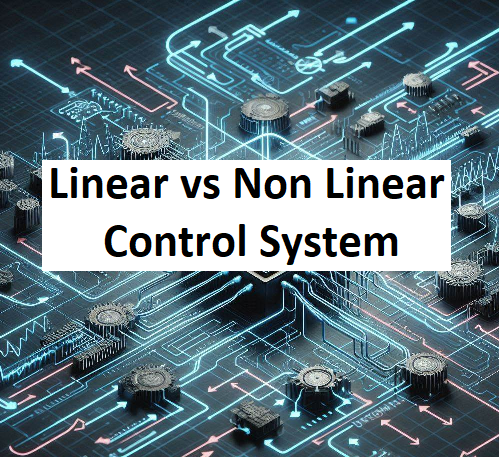Linear vs. Nonlinear Control Systems: A Comprehensive Guide – Control systems, the mechanisms that regulate the behavior of a system, can be broadly classified into two categories: linear and nonlinear. Understanding the distinctions between these two types is crucial for designing and implementing effective control strategies.

Linear Control Systems
A linear control system is one in which the output is directly proportional to the input. This means that if the input is doubled, the output will also double. Mathematically, a linear system can be represented by a linear equation.
Key Characteristics:
- Superposition: The principle of superposition states that the response of a linear system to a sum of inputs is the sum of the responses to each individual input.
- Homogeneity: If the input to a linear system is scaled by a constant, the output will also be scaled by the same constant.
- Time-invariance: A linear system is time-invariant if its behavior does not change over time.
Examples:
- Simple electrical circuits
- Mechanical systems with small displacements
- Chemical processes with constant parameters
Nonlinear Control Systems
A nonlinear control system is one in which the output is not directly proportional to the input. This means that doubling the input may not result in doubling the output. Nonlinear systems are often characterized by complex mathematical equations.
Key Characteristics:
- Non-superposition: The principle of superposition does not hold for nonlinear systems.
- Non-homogeneity: Scaling the input to a nonlinear system does not necessarily scale the output by the same factor.
- Time-variance: Nonlinear systems may exhibit time-varying behavior.
Examples:
- Large-scale mechanical systems
- Chemical processes with varying parameters
- Biological systems
Advantages and Disadvantages of Linear and Nonlinear Control Systems
| Feature | Linear Control Systems | Nonlinear Control Systems |
|---|---|---|
| Analysis | Easier to analyze and design | More complex to analyze and design |
| Stability | Generally more stable | Can be less stable, especially for large-scale systems |
| Performance | Often provide good performance for small deviations | Can provide better performance for large deviations |
| Implementation | Easier to implement | More challenging to implement |
Applications of Linear and Nonlinear Control Systems
- Linear Control Systems:
- Process control
- Robotics
- Automotive systems
- Aircraft control
- Nonlinear Control Systems:
- Aerospace control
- Chemical processes
- Biological systems
- Robotics with complex dynamics
Conclusion
Both linear and nonlinear control systems have their own advantages and disadvantages. The choice of a control system depends on the specific requirements of the application. In many cases, a combination of linear and nonlinear control techniques can be used to achieve optimal performance.